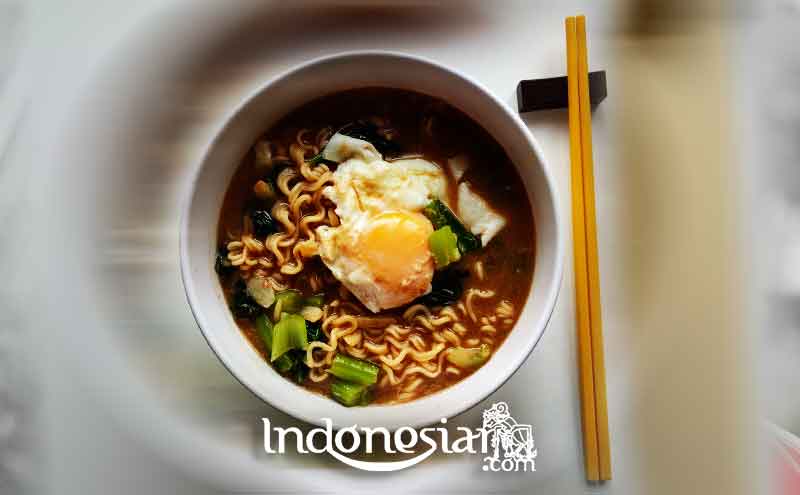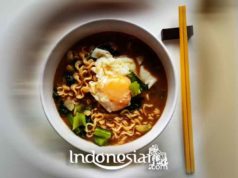With the diversity of society and culture in Indonesia, making staple food in Indonesia does not only depend on rice alone.
As a country with a variety of cultures, it is natural that the people do not only depend on rice as a staple food. Considering that not all regions in Indonesia can be planted with rice, so many people end up using other foods as daily staples.
Indonesian Staple Food
As a country with a variety of cultures, it is natural that the people do not only depend on rice as a staple food. Considering that not all regions in Indonesia can be planted with rice, so many people end up using other foods as daily staples. What are the basic foods of Indonesia?
Staple Food Sago
Sago is one of the staple foods that you can find in the regions of Papua and Maluku. Usually in harvesting sago, sago stems are needed between the ages of 3-5 years. Sago will be cut down and squeezed to get the starch to form sago flour. In Papua, the use of sago as a staple food for Indonesia, you can usually see in the coastal areas.
Corn Staple Food
Corn may be one of Indonesia’s most popular staple foods besides rice. But corn is not known as a staple food, except in Madura, East Nusa Tenggara, Sulawesi and Central Java. Usually corn is processed into corn rice as Indonesia’s staple food.
Unlike sago, corn is very rich in vitamins and contains enough carbohydrates for the body’s daily needs. In addition, corn also contains zinc, phosphorus, and calcium which are quite high, which can even reduce cholesterol levels.
Cassava
Cassava is one of the tubers that is no less good for the body than rice. Cassava is also widely consumed as Indonesia’s staple food by the public.
Cassava can also be made into various kinds of preparations such as boiled cassava, fried cassava, roasted cassava, or cassava rice. Whole cassava has a high carbohydrate content, so it is suitable to be an Indonesian staple food instead of rice.
In addition, cassava is very well consumed by people who are running a diet program, because it does not have fat and cholesterol content.
Jewels
Jewels may be rarely heard. Barley is a kind of small seeded cereals that were once Indonesia’s staple food before the introduction of rice. The shape is somewhat similar to wheat. Not only in Indonesia, even barley used to be a staple food in East and Southeast Asia.
The regions that used barley as Indonesia’s staple food used to be Enrekang, South Sulawesi, Smba Island, Rote Island, and several other areas. In Biak Numfor, barley is a staple food which is processed into a kind of porridge.
In addition, this barley porridge is still consumed by people in Bengkulu and several places on the island of Java.
Sweet potato
Sweet potato is one of Indonesia’s staple foods that is consumed in addition to rice. Sweet potatoes are usually consumed by many people in Papua and Maluku. These sweet potatoes will be processed by burning a typical stone. Sweet potatoes are usually consumed by the people of Papua who live in mountainous areas.
Carbohydrate content in sweet potatoes is higher than cassava, besides sweet potatoes also contain vitamin A which can meet your daily vitamin needs, even more than 100%. In addition, sweet potatoes have a sweeter taste than other Indonesian staple foods instead of rice.
Maluku and Papua Staple Foods
Sago is a staple food for Indonesians living in most of Eastern Indonesia. Starting from Maluku, Papua, and even Nusa Tenggara generally recognize sago in the structure of the main diet of the native population. Sago itself actually comes from flour obtained from the sago tree trunk (Metroxylon sago Rottb.) Which looks like a palm tree. Generally sago trees grow on river banks or areas with quite high water content such as swamps. Sago trees can grow to 30 meters and from one tree, sago farmers can produce 150-300 kilograms of raw material for sago flour.
To get quality sago flour, generally the people of Eastern Indonesia search their own way to the forests. But for those who already live in cities, sago is very easy to find in markets. Traditionally, Eastern Indonesian people living in remote areas still produce their own sago. They usually look for quality sago trees to the interior of rivers and remote marshes.
For the people of Maluku and Papua, especially those who live in coastal areas, Sago is a staple food that is very easily processed and found. Usually they prefer sago to rice as their staple food. However, to process sago stems into sago flour and other preparations is not a simple process. The process is quite complicated and has definite stages.
The people of Maluku and Papua usually process sago into several types of staple foods, the famous one being papeda with thick texture like glue. In addition, there is a type of grilled sago food, where sago flour is heated until it is joined and shaped like bread. This food is usually used as an afternoon snack or breakfast with a complement of hot tea or coffee. Many foods can be produced from processed sago because sago is very easy to process, filling and rich in healthful substances. Sago has a high enough carbohydrate content, but it is very low in sugar and fat so it is suitable for diabetics.
Madura Staple Food
Madura’s staple food is Corn Rice, Madura natural conditions are indeed suitable for planting corn, if you visit Madura you will easily find a seller of corn rice because this is indeed the traditional food of the Madurese people.
Corn rice in Madura using the main raw material is corn mixed with a little white rice served in a basket or container made of bamboo.
Corn rice is usually served with side dishes such as fresh vegetables, bean sprouts and long beans. in addition, you can choose side dishes in the form of ointment as a corn rice companion. As for the complement, corn rice is usually served with pepes cob and bali spices tempeh which will be even more delicious if eaten with chilli sauce.
So for those of you who don’t know, I hope this article will give you new knowledge.































